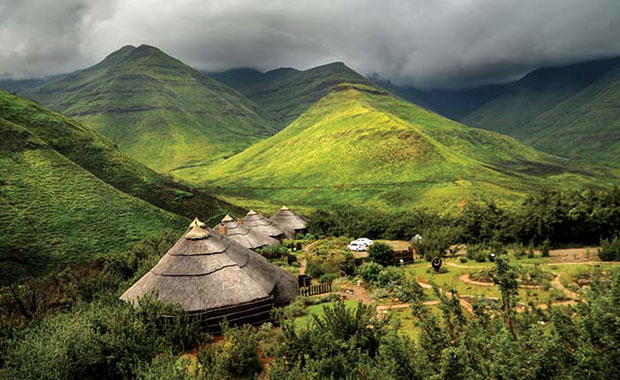The Land of Heights and Extremes

Climate
Clean and invigorating are the best words to use when describing Lesotho’s climate. More than 300 days of a Lesotho year offer brilliant sunshine, yet the country has well-marked seasons. Summer extends from November to January and is usually hot. Autumn days are warm and ideal for outdoor pursuits such as hiking and camping. Writer, lasting from May to July, brings snow to the Maluti Mountains, and a skier’s haven. When spring arrives, it is peach-blossom time in almost every village, and the countryside is transformed into drifts of pink. Eighty five percent of Lesotho’s rainfall-between 700mm and 800 mm, occurs between October and April, bringing the rivers down in full volume and creating ideal fishing and rafting conditions.
Culture & Heritage
Lesotho is a country that is often governed by, and thrives on tradition. You can hike or 4x4 to the Kome Cave Village to get a taste of old style living. Threshing grain at harvest time is a highly skilled, labour intensive operation which involves the entire community, each playing his or her vital role. Grain is stored in exquisitely woven grass silos. The artistry that goes into their making is another finely crafted skill. Other traditional pursuits include tribal dancing and stick-fighting.
Lesotho boasts some pristine dinosaur relics. The Natural History Museum in London hosts a 1-metre long herbivorous lizard, Lesothosaurus, named after Lesotho. The Kome Cave dwellings, a National Heritage Site, were built in the 19th century, and are still lived in by the original families. A visitors’ center has been attached to the site and guided tours are conducted daily.











Comments.